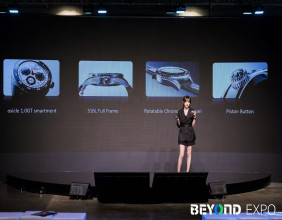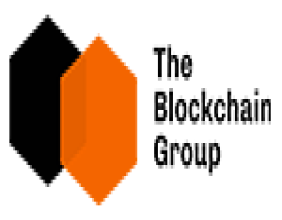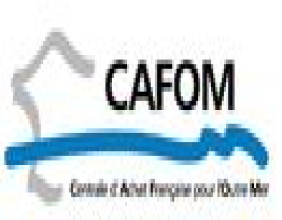The global vacuum cleaner market valued at $13.8 billion in 2023, and is projected to reach $33.9 billion by 2033, growing at a CAGR of 9.6% from 2024 to 2033
Vacuum cleaners are used both in residential and commercial settings, offering an efficient and faster cleaning solution compared to manual cleaning methods. Moreover, the vacuum cleaner market encompasses a wide range of product types, including upright, canister, handheld, stick, and robotic vacuum cleaners. These devices come with different functionalities, such as bagged or bagless designs, corded or cordless power, and various filtration technologies like HEPA filters, which cater to diverse consumer needs. The market also spans across various end-use industries including residential, commercial, and industrial applications.
𝐑𝐞𝐪𝐮𝐞𝐬𝐭 𝐓𝐡𝐞 𝐒𝐚𝐦𝐩𝐥𝐞 𝐏𝐃𝐅 𝐎𝐟 𝐓𝐡𝐢𝐬 𝐑𝐞𝐩𝐨𝐫𝐭 @ www.alliedmarketresearch.com/request…mple/13415
Key Takeaways
The vacuum cleaner market study covers 20 countries. The research includes a segment analysis of each country in terms of value ($billion) for the forecast period 2024-2033.
More than 1, 500 product literatures, industry releases, annual reports, and other such documents of major vacuum cleaner industry participants along with authentic industry journals, trade associations' releases, and government websites have been reviewed for generating high-value industry insights.
The study integrated high-quality data, professional opinions & analysis, and critical independent perspectives. The research approach is intended to provide a balanced view of global markets and to assist stakeholders in making educated decisions to achieve their most ambitious growth objectives.
Key Market Dynamics
The rising demand for smart home appliances is accelerating the vacuum cleaner market growth. Consumers are increasingly drawn to smart vacuum cleaners due to their advanced features such as voice control, Wi-Fi connectivity, and app-based operation, which integrate seamlessly with smart home ecosystems. These devices offer greater convenience and efficiency, appealing to tech-savvy, time-conscious consumers. As more homes adopt IoT-powered devices, the market for smart appliances, including vacuum cleaners, is expanding. Smart vacuum cleaners also contribute to energy conservation and cleanliness, especially in urban areas where maintaining hygiene is a priority. According to a 2022 report by the Consumer Technology Association, 41% of U.S. homes now have at least one smart home device, which highlights the growing trend that is increasing the demand for smart vacuum cleaners globally.
However, the high initial cost of advanced vacuum cleaner models, such as robotic and AI-integrated versions, is a significant restraint on the vacuum cleaner market demand. These technologically sophisticated devices, often priced between $500 and $1, 500, are out of reach for many consumers, particularly in price-sensitive regions and emerging markets. As a result, potential buyers may opt for more affordable, traditional vacuum cleaners or alternative cleaning solutions which drectly affect vacuum cleaner market size. While these high-end models offer numerous benefits, including automation and smart functionalities, the cost barrier slows down widespread adoption and affects vacuum cleaner market share . The situation is further complicated by maintenance and repair costs, which tend to be higher for advanced vacuum models.
Moreover, the expansion of the robotic vacuum cleaner segment is creating substantial growth opportunities in the vacuum cleaner market. These devices, equipped with advanced AI, sensor technologies, and self-navigation systems, are increasingly popular among consumers looking for convenient and time-saving cleaning solutions. The global robotic vacuum cleaner market is projected to grow rapidly, driven by rising demand for smart homes and automation. In regions with high labor costs and busy lifestyles, these devices offer significant convenience by autonomously handling cleaning tasks. Furthermore, innovations such as improved battery life, voice-command integration, and enhanced room-mapping capabilities are making robotic vacuums more efficient and desirable. For instance, companies like iRobot and Ecovacs have already capitalized on this trend, leading to increased competition and product innovations that are further improving vacuum cleaner market share.
𝐄𝐧𝐪𝐮𝐢𝐫𝐲 𝐁𝐞𝐟𝐨𝐫𝐞 𝐁𝐮𝐲𝐢𝐧𝐠: https://www.alliedmarketresearch.com/purchase-enquiry/A06521
Industry Trends
Increased Adoption of Smart and Robotic Vacuum Cleaners: Smart and robotic vacuum cleaners are gaining popularity due to their convenience and ability to operate autonomously. With advancements in artificial intelligence (AI) , machine learning, and Internet of Things (IoT) technologies, these devices can now map rooms, avoid obstacles, and clean more efficiently. Voice control integration through assistants like Alexa and Google Assistant is further driving demand.
Rising Consumer Preference for Cordless and Bagless Designs: Consumers are increasingly opting for cordless and bagless vacuum cleaners due to their portability, ease of use, and lower maintenance. Cordless models are particularly popular for cleaning hard-to-reach areas and are driven by advancements in battery technology, providing longer runtimes.
Focus on Energy Efficiency and Sustainability: As environmental consciousness grows; consumers are seeking energy-efficient and eco-friendly vacuum cleaners. Manufacturers are responding by developing models that consume less power and use recyclable materials, reducing their environmental impact. Governments, especially in Europe and North America, are also imposing stricter regulations on energy consumption, pushing the market towards sustainability.
Technological Advancements in Filtration Systems: There is a growing emphasis on advanced filtration systems, particularly HEPA (High-Efficiency Particulate Air) filters, which can trap fine dust particles, allergens, and bacteria. These filters are becoming essential in vacuum cleaners for consumers with allergies or respiratory issues, as they contribute to cleaner indoor air quality.
Integration of AI and Machine Learning for Personalized Cleaning: AI-powered vacuum cleaners are becoming more sophisticated, offering personalized cleaning routines based on user preferences and room layouts. These devices can "learn" the home environment, optimizing cleaning efficiency by adjusting to different surfaces, avoiding obstacles, and remembering high-traffic areas.
Increased Demand for Commercial and Industrial Vacuum Cleaners: Beyond residential use, there is growing demand for heavy-duty vacuum cleaners in commercial sectors such as healthcare, hospitality, and office spaces. Industrial vacuum cleaners with enhanced suction power, durability, and advanced filtration are crucial in maintaining high standards of cleanliness in commercial environments.
𝐄𝐱𝐩𝐥𝐨𝐫𝐞 𝐀𝐌𝐑'𝐬 𝐄𝐱𝐭𝐞𝐧𝐬𝐢𝐯𝐞 𝐨𝐧𝐠𝐨𝐢𝐧𝐠 𝐂𝐨𝐯𝐞𝐫𝐚𝐠𝐞 𝐨𝐧 𝐂𝐨𝐧𝐬𝐮𝐦𝐞𝐫 𝐚𝐧𝐝 𝐆𝐨𝐨𝐝𝐬 𝐃𝐨𝐦𝐚𝐢𝐧:
𝐄𝐲𝐞 𝐒𝐡𝐚𝐝𝐨𝐰 𝐌𝐚𝐫𝐤𝐞𝐭 www.alliedmarketresearch.com/eye-sha…ket-A16914
𝐏𝐨𝐫𝐞 𝐒𝐭𝐫𝐢𝐩𝐬 𝐌𝐚𝐫𝐤𝐞𝐭 www.alliedmarketresearch.com/pore-st…ket-A10612
𝐃𝐞𝐨𝐝𝐨𝐫𝐚𝐧𝐭 𝐚𝐧𝐝 𝐀𝐧𝐭𝐢𝐩𝐞𝐫𝐬𝐩𝐢𝐫𝐚𝐧𝐭𝐬 𝐌𝐚𝐫𝐤𝐞𝐭 www.alliedmarketresearch.com/deodora…nts-market
David Correa
Allied Market Research
+ +1 800-792-5285
email us here
Visit us on social media:
Facebook
X
Legal Disclaimer:
EIN Presswire provides this news content "as is" without warranty of any kind. We do not accept any responsibility or liability for the accuracy, content, images, videos, licenses, completeness, legality, or reliability of the information contained in this article. If you have any complaints or copyright issues related to this article, kindly contact the author above.
![]()



